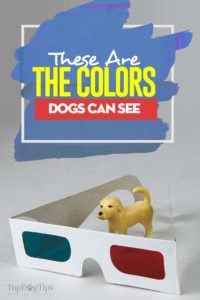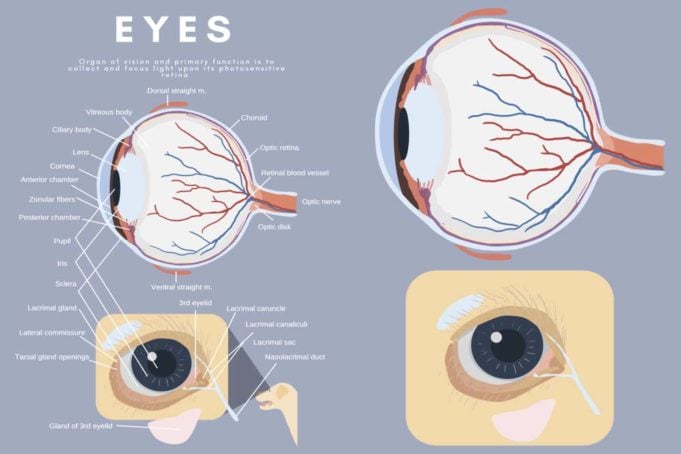You have probably heard that dogs can only see the world in black and white, or even just shades of gray. These are common misconceptions caused by old research which persist even today. The truth is – dogs can see colors, and their eyes distinguish a wide variety of color palette, according to most recent studies. However, they don’t see the same (or as many) color shades as humans do.
So What Colors Do Dogs See Then?
Humans have three types of cones in their eyes and each cone has cells sensitive to specific color. These colors are red, blue and green. Unlike us, dogs have just two receptors which are sensitive to blue and yellow. Dogs can also process various shades of gray, of course.
That means that the color range which dogs can see is compressed into the green and blue part of the spectrum. This is very similar to the human color blindness, especially the red-green color blindness. Since dogs have fewer cones than humans, the number of colors dogs can see is significantly lower and not as intense.
The funny thing about this lies in the fact that the most popular colors for dog toys are orange and red, which are hard for dogs to see. They will appear to your pooch as dark brown/gray, or even black. Perhaps you should choose a more dog-friendly color when you buy a new toy for your canine the next time?
Do Dogs Use Color Vision?
 Now we know that dogs can see color but do they use the color vision to discriminate between objects? Many scientists have believed that dogs rarely use color information for this task, instead relying on the darkness or brightness of the objects.
Now we know that dogs can see color but do they use the color vision to discriminate between objects? Many scientists have believed that dogs rarely use color information for this task, instead relying on the darkness or brightness of the objects.
However, one 2013 study done by Russian and Georgian scientists proved that color cues are more informative for dogs than brightness. In fact, half of the dogs that participated in the experiment made their conscious choices exclusively by color.
Why Can’t Dogs See Like We Can?
It all comes back to Darwin again. Dogs see the world differently because they had different priorities than humans during the evolution. Since dogs are built for seeking out prey and hunting, they have high sensitivity to motion at a distance, 10 to 20 times better than humans.
This also means that a dog's vision is better suited for a time around sunrise and after sunset. Dogs also have a wider peripheral vision than us. On the other hand, their visual acuity is also less developed than ours. That means that objects often appear blurry to them.
 Another reason why dogs don’t have the same vision as humans comes from their enhanced sense of smell. They have a very sensitive snout which makes the advanced color perception unnecessary.
Another reason why dogs don’t have the same vision as humans comes from their enhanced sense of smell. They have a very sensitive snout which makes the advanced color perception unnecessary.
In conclusion, dogs can see color, although their color vision is reduced to seeing yellow, blue, combinations of these two colors and shades of gray. While their color vision is not as good as the color vision of humans, they do use it to discriminate between objects. They also rely less on that aspect and more on their sense of smell.
READ NEXT: 13 Things Dogs Can Sense About You













